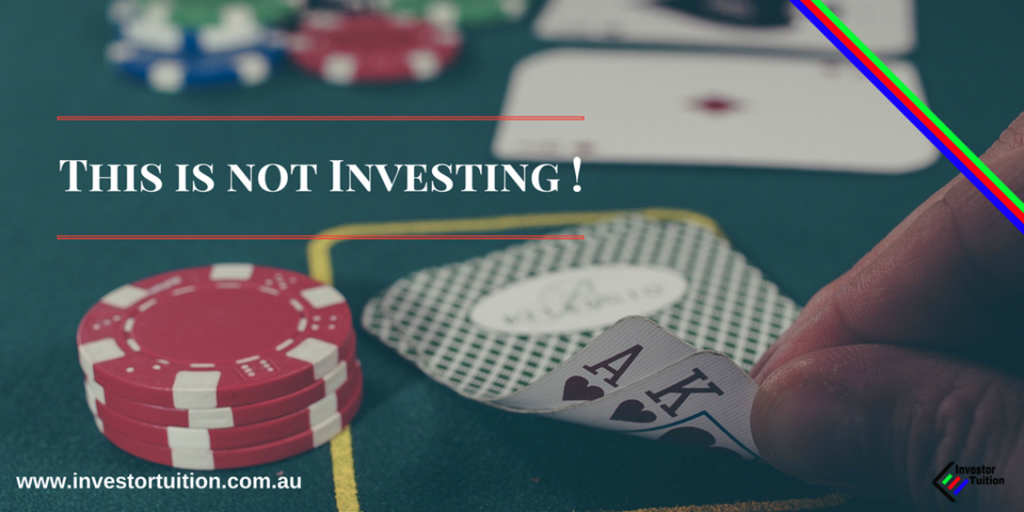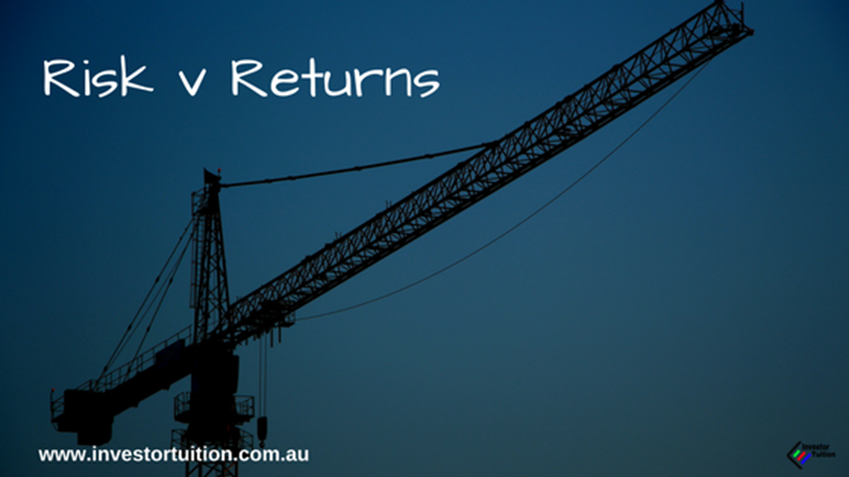
Risk and return are what investing is all about. And the higher the risk, the higher the possible re- turns is a fundamental tenet when evaluating potential investment options. And I can assure you, this one simple phrase is invaluable to investors and should always be part of any analytical toolkit. So let’s take a look at how we apply it to investment decisions.
When I look back over many years of giving advice, it seems that the most common request by cli- ents for their investment portfolio’s was “can you give me the highest return for the lowest risk” And being somewhat of an investment cliché, it tended to be spoken with a degree of tongue planted in cheek. But the underlying message was quite clear, “no risk for my money please”.
I recall once an RAAF fighter pilot telling me that he believed shares were far too risky an invest- ment. I actually thought this to be quite odd, considering his occupation! But his reasoning was simple when I brought this up – “he was exceptionally well trained and understood what he was do- ing and so were his colleagues”, therefore he didn’t perceive his occupation as risky.
Now, his answer certainly provided some insight, but probably not quite what he had in mind. Ac- cording to him, training leads to a competent understanding of a task, which in turn minimizes the chance of anything going wrong ie reduces risk. A good and valuable lesson for investors, showing knowledge does, in fact, conquer fear.
But, I wonder how he perceived my role? I was comprehensively trained, and he was actually seeking my advice. Shouldn’t I know what I was doing? Shouldn’t he then put his faith in my recommenda- tions? For some investors, it can be very hard to see the wood for the trees!

What are risk and return all about?
Quite simply risk is the sum of all the possible events which could have an impact on your invest- ment. And there are numerous. In fact, every investment no matter how safe they appear will be subject to risks. For example, a bank deposit is considered by investors as being risk-free.
However spend too long earning cash rates of return, and you will find that inflation has eroded the purchasing power of your funds. Thus leaving you in effect, with less money than what you com- menced with.
Therefore you have lost money over time but it has been a slow and steady erosion rather than in on fell swoop. (To see more of the many risk factors investors can encounter, check this post.)
Return is the money an investor earns in exchange for the use of their money. Every investment is theoretically a loan from one person to another. And as such, the rate of return is there to attract funds in a very crowded marketplace.
People are averse to risking their capital unless they are being well compensated. The return is, therefore, a reflection of the amount of risk inherent in an investment. The higher the return the higher the investment risk. Unfortunately, many investors fail to understand this very simple fact when they are selecting an investment.
Why do bank lending rates differ so much?
Ever wondered why the banks offer much lower rates of interest on their housing loans and much higher rates of return on a personal loan, and even higher interest rates on a credit card? It’s, in fact, the same principle, just in reverse.
The bank actually has far less risk of losing money from a default on a housing loan. Should it hap- pen, they just sell the property and recover their money. Low risk, low rate.
However, it’s more difficult recover money for personal loans defaults. They can repossess the car, boat or caravan the funds were used for, but because of depreciation, it will only go part way to re- covering bank costs.
And a credit card, usually in the 18% to 24% range, however, has absolutely no asset for the bank to recover any funds from. Hence it represents their highest risk lending.
So you can see, the higher the lending risk to the bank, the higher the associated interest rate offered.
Saving or Investing?
By the way, it is very important when you’re analyzing an investment to be able to clearly distinguish between whether you’re saving for a particular event, or investing for your future wealth.
Often, people will prefer higher return investments (therefore higher risk) in order to get to their saving goal quicker. Only to have their dream decimated by an unexpected market downturn. You would be very surprised how often this happens. So make sure to take a look at this post to get a better understanding of the difference between saving and investing.

Okay, so higher returns are expected from higher risk, and the more risk we take, the more return we expect. Simple, obvious, and straightforward I hear you say, and I certainly agree. We can, therefore, surmise that the investment’s promised returns become a reliable measure of the risk of an investment.
For example, one of the safest investment rates is offered by bank term deposits. Now whatever rate the bank is offering, and for this example let’s assume 2.5%, we can regard it as being earned risk- free. That is, the chance of the bank not returning your money or failing to pay the interest is negli- gible (also, all investments up to $250k attract the Federal Government guarantee) Therefore we can refer to this return as the risk-free rate of return.
But this morning whilst browsing the net, you see an advertisement for a “blue chip property devel- opment company, paying monthly interest at 9%, guaranteed by a first mortgage. “ Wow this is great you think,” blue chip” means big and safe, the ‘first mortgage” couldn’t be safer, and 9% re- turn, come on, what am I waiting for.
On the surface, the offer has all the signs of being a pretty good deal. The advertisement has men- tioned all the right phrases that convey safety and security. And certainly appears heaps better than putting money in the bank. But there is one, very big detail! The rate being offered is absolutely screaming – risk, risk, and more risk.
Let’s apply our rule – the higher returns, the higher risk. The bank (risk-free) is offering 2.5% versus the advertised product at 9%. Now you don’t need to be Einstein to work out which invest- ment has all the risk. So no matter how the product is portrayed in the advertising, their rate of re- turn is higher than the risk-free benchmark and that tells the story, nothing else.

Hence you should be analyzing the investment with that fact clearly in mind. You need to determine if you are comfortable taking that risk. Which by the way could be anything from merely devaluing your original investment right through to a complete loss. And most certainly, you should plan how you are going to mitigate the risk. There’s plenty of ways you can do this, but you first have to be able to recognize that a risk exists.
So for any investment, you may see advertised, offering a rate of return higher than the current risk- free rate, expect to be risking your funds. And this remains correct no matter which government, bank, corporation or person is offering the product.
Don’t be fooled by advertising claims, I can assure you billions of dollars of investment funds have been lost by investors who have relied solely on those claims.
So, remember, the higher the return on offer, the higher the risk of losing money – an immutable law of investing.
Thanks for reading, see you next time. Homepage

